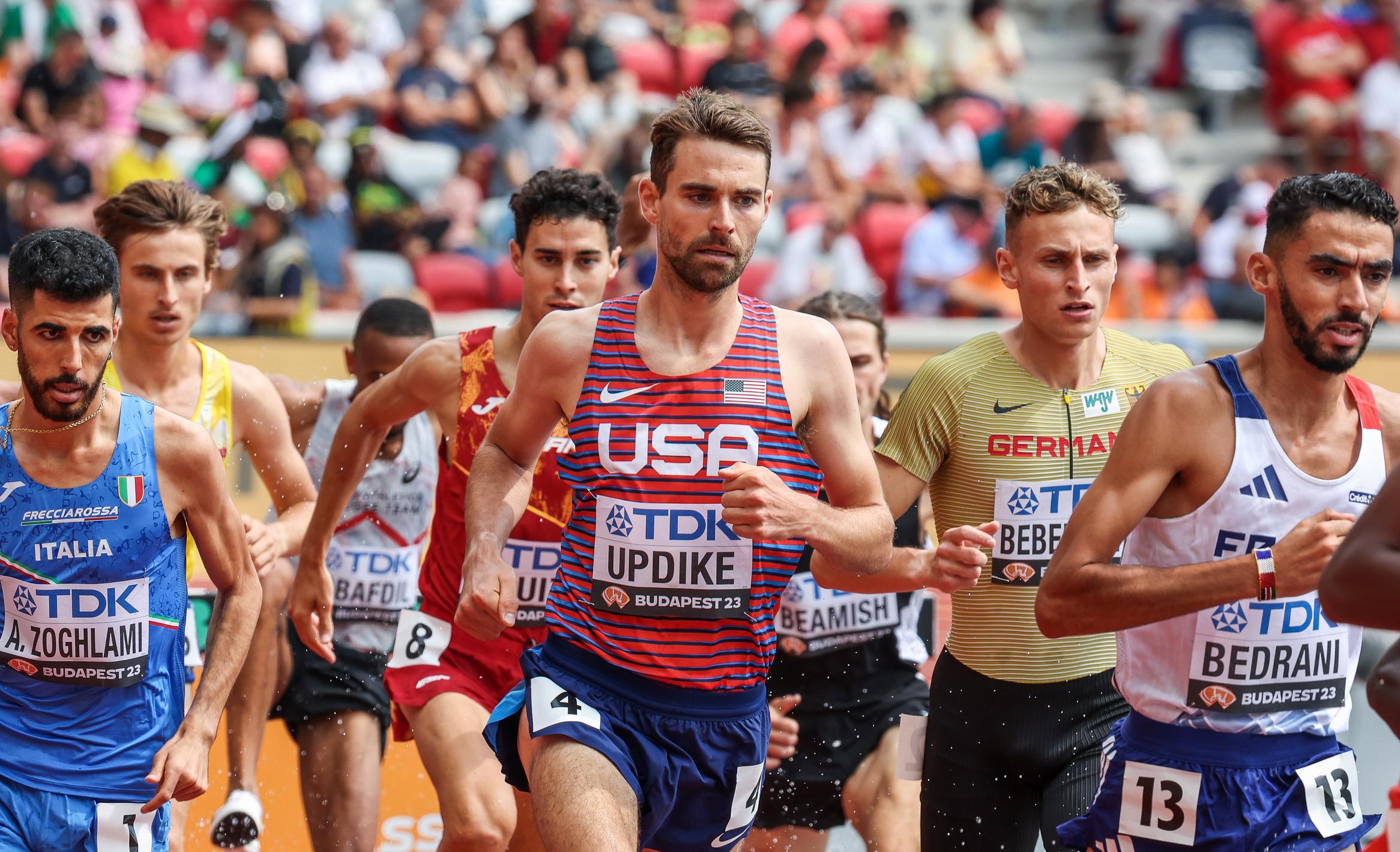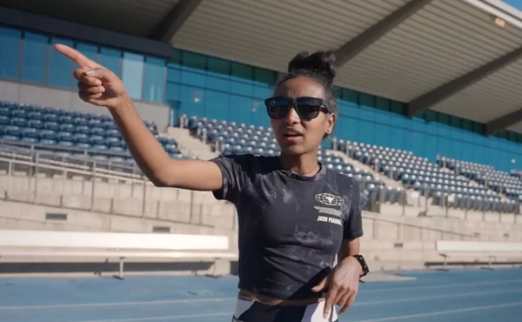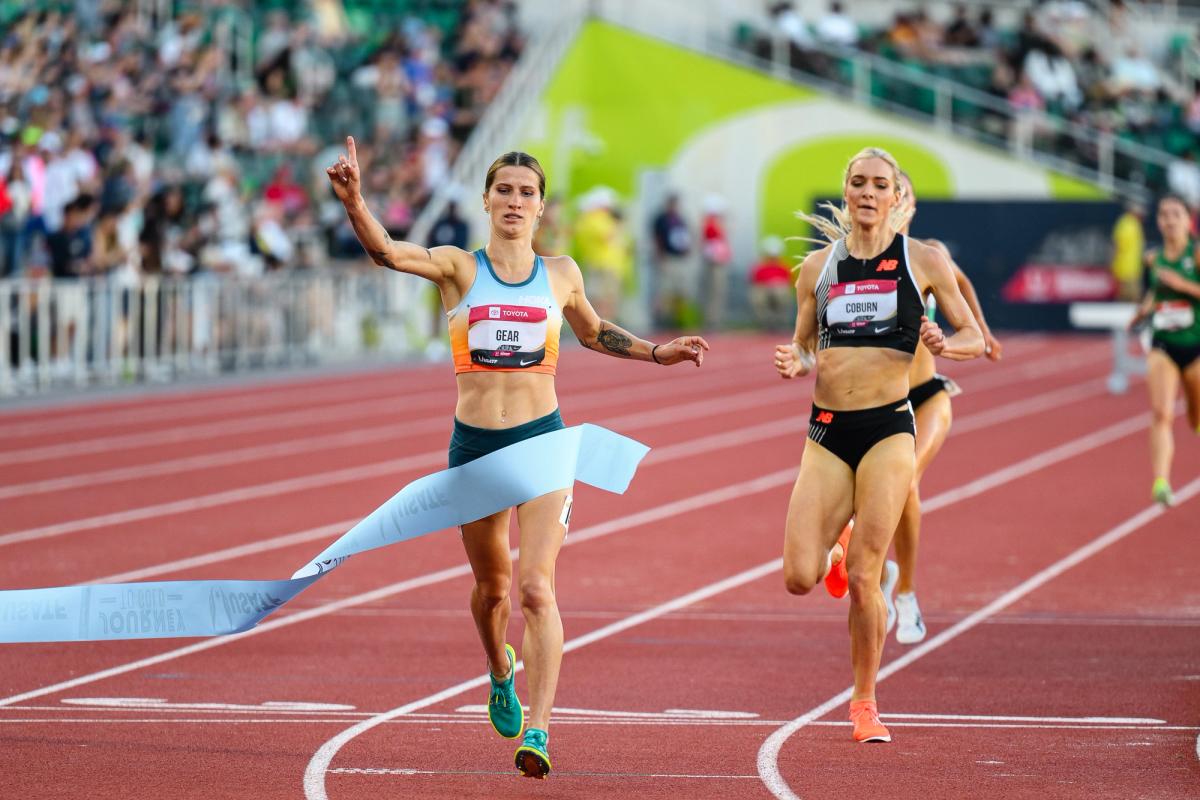By Kyle Merber
November 1, 2023
We're joined by UA Mission Run Dark Sky Distance’s Isaac Updike, who represented the U.S. at the 2023 World Championships in the steeplechase, for the first edition of "The Athlete’s Voice".
"Almost every time I race, an announcer mentions that I grew up in Alaska and that I ran in the NAIA.
These things are both true, and they do inform how I show up on a startling line. But when people hear those facts, they make certain assumptions about how I show up on the track: with a chip on my shoulder, eager to prove I belong.
Looking back, it’s easy to say that I didn’t have the same opportunities as others. But the reality was, at the time, I didn’t know that. I didn’t know anything! And I sure didn’t know what I didn’t have.
For those who don’t know, I grew up in Ketchikan, Alaska. It’s the southernmost town in Alaska, on an island in a dense, old growth temperate rainforest. It’s a cruise line stop, and people usually work in the fishing or logging industries. I grew up playing in the woods with my friends and throwing fishing nets in the trees to climb around on. In a town of 8,000 people, you’ll find that kids play just about every sport, and I was no exception. I grew up playing basketball, soccer or futsal (basically, a variation of indoor soccer), and baseball.
In 6th grade, I remember a girl named Carmen told me I should try out for cross country in the middle of a game of tag. I promptly ran away, ignoring her suggestion all together. I like to say my running career finally started when I didn't make the cut for my 8th grade middle school basketball team. Cross country it was. I remember showing up to practice without running shoes one day, and having to lace down my Etnies skate shoes and run in them. It wasn’t something I was serious about. It was just another chance to hang out with my friends and be on a team.
I think this was a foundational aspect of my relationship to running and sport. I approached running around the mindset of being on a team. Yes, you are running your own race, but you are all out there together and can help push and encourage each other.
In Southeast Alaska, you travel a lot via overnight ferries. We’d pack onto the ferry with our team and pick up other teams along the way. That meant by the end of a ferry ride there were sometimes upwards of 100 kids from various towns all intermingled on the ferry. We’d bring sleeping bags and sleep all over the ferry, play cards, and eat in the ferry’s cafeteria.
Once we got to the town where the meet was held there were two options: either we were sent off in groups and housed by local families (that usually had a child in cross country, as well) or every team would stay in the local school for the weekend. We’d roll in and take over the gym floor. As you might imagine, these were essentially 100-person slumber parties. We would inevitably gain access to a projector for movies or horse around with any gym class equipment we could find. So you know, we were super well rested and prepared to run hard on meet day.
It’s funny how now, we try to control even the smallest variables. That wasn’t how I learned the sport, though, and it wasn’t how I first learned to love it. So in a lot of ways, I think I still carry that attitude with me. While I’m diligent with training and nutrition and recovery… if my bag gets lost or I have to skip a day of practice because my knee hurts, I know I’ll be okay.
Running is still about community and connection. And clearly I run to see how far I can push myself and find what my athletic peak is – but that wasn’t why I started. I don’t feel like I carry the same weight of expectations as others in this sport. I have big ambitions, but I won’t fixate if on the day, things don’t go to plan. I can learn, move on, and be ready for another day.
A good example of this would be in the 2021 Olympic Trials. I had a good year leading up to it and made the final, coming in as a top contender for an Olympic spot in the steeplechase.
The race was not ideal and I ended up finishing in fifth. After the race, I found my partner, Justine, who made the Olympics in 2016 for France, crying because I hadn’t made it. When she asked if I was sad, I simply replied, ‘It sucks I didn’t make it but I ran as hard as I could out there.’ Why would I be sad? I had the best year I’d ever had!
I think that’s the first time we realized how differently we grew up in the sport. For Justine, she felt pressure and expectation and it was more about the outcome than the process. I never felt any pressure to run, or to compete in sports to gain a scholarship for college, or get into an elite development program. To be honest I’m not sure I knew those were even options to strive for until they were right in front of my face.
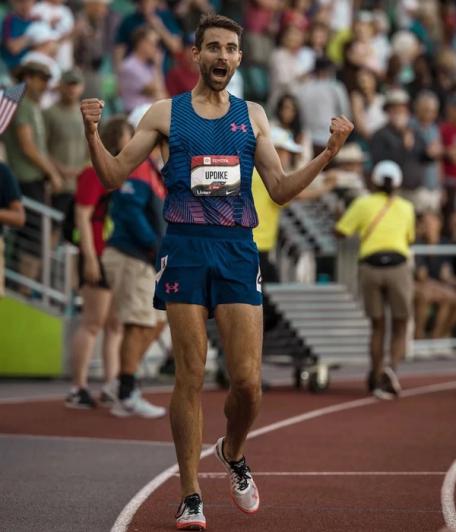
Justin Britton / @JustinBritton
For better or for worse, because my awareness of what I could do in the sport grew so much later, I’ve been able to really enjoy the day-to-day. In some ways, I’ve been fortunate to be naive. Each year I learn more about what’s possible, and dream bigger for myself. I know how to be diligent and work hard, and it’s like I’m unlocking new levels of the game with every accomplishment or opportunity. When I first started running across the muddy trails of Ketchikan, I didn’t even know professional track was a real sport. Pretty cool that I’ve traded hopping over logs for hopping over steeple barriers on tracks around the world.
It is easy to look back on how I got here and assume that I was driven by the notion that even though I didn’t have the same resources from the start, I could succeed anyways.
But the reality is that my scope was different from most people’s. I was not someone who was a “have not”. I was just someone doing their best in the only context they knew, until the context changed and it was time to grow. I’ve adapted with my running, but my mindset is still the same: make it work and have fun hanging out with your friends. There are many paths towards success, and we get to decide what that looks and feels like for ourselves."
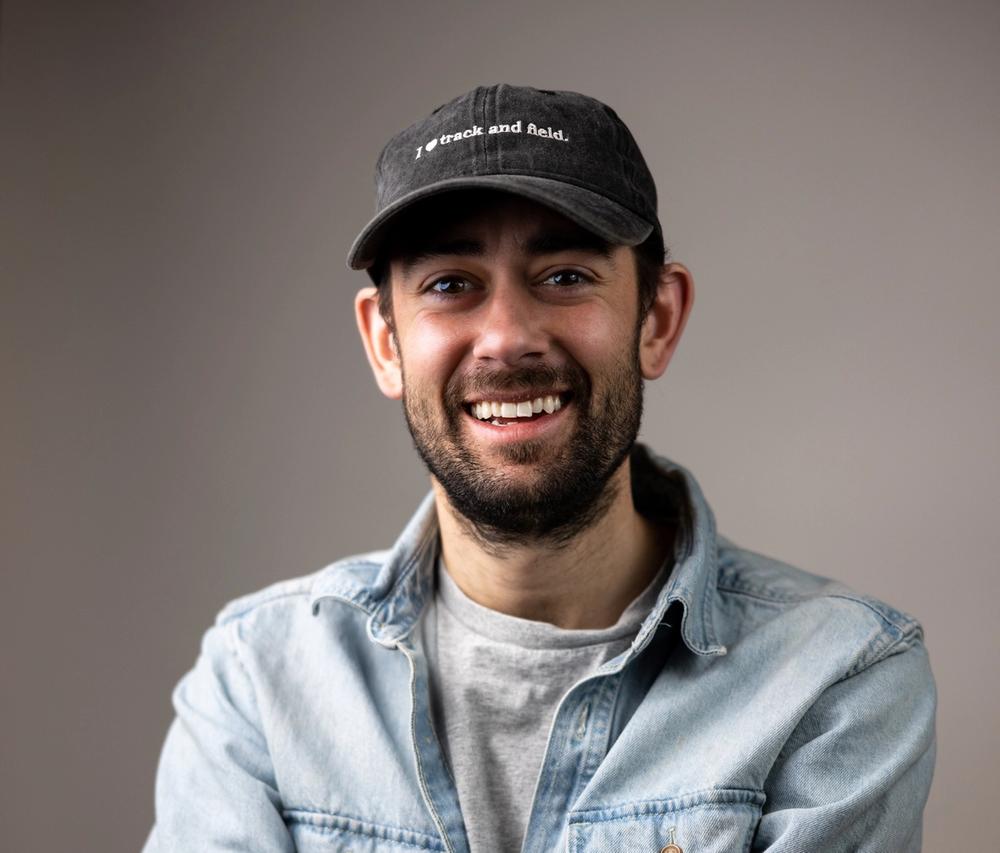
Kyle Merber
After hanging up his spikes – but never his running shoes – Kyle pivoted to the media side of things, where he shares his enthusiasm, insights, and experiences with subscribers of The Lap Count newsletter, as well as viewers of CITIUS MAG live shows.
